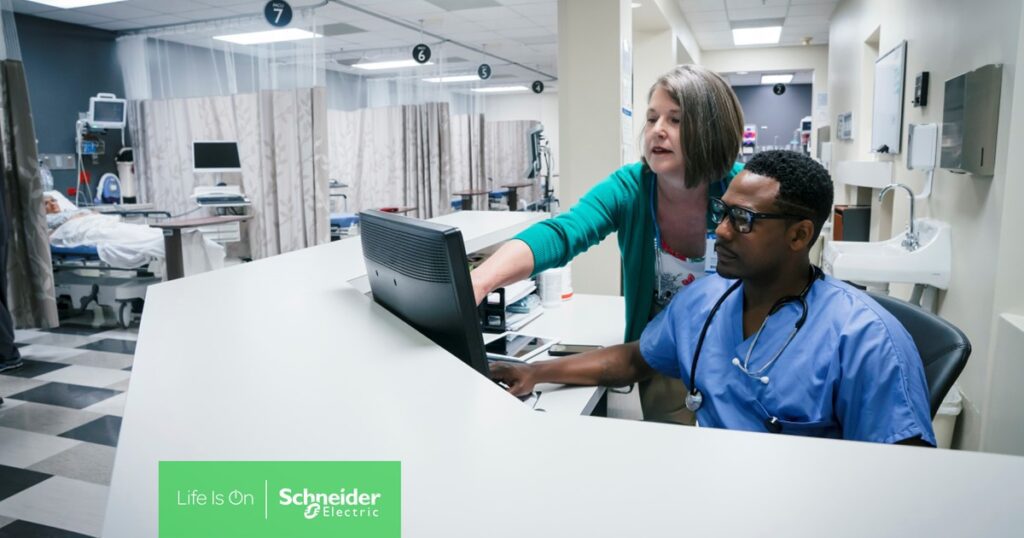In today’s era of the smart hospital – one that is connected to the overall IT architecture – the risk of an IT-driven, hospital-wide disruption is increased. Resiliency, efficiency, and security are now more important than ever. Hospitals need qualified partners to help them reduce the risk of disruption and its impact to operations. Below, we’ve outlined examples of improvements the right partnership – and edge computing solutions – will enable you to make. You can also learn about the roles IT resiliency, efficiency, and security play within healthcare in our new eBook How Healthcare IoT Resilience, Efficiency, and Security Impact Hospitals.
Drive IoT in healthcare and maximize resiliency with predictive maintenance
Predictive maintenance is crucial to max resiliency. Fixing something before it breaks often lets you avoid a domino effect of repercussions when the power or network fails. IT professionals know how to choose high-quality equipment like lithium-ion battery uninterruptible power supplies, but they may need a reminder that software is equally important when it comes to IoT in healthcare.
Energy and equipment management becomes more of a guessing game when you don’t have a monitoring platform. No one will see the failure alarm if a UPS battery fails and isn’t connected to the network. A software platform that can integrate all the power and cooling data center solutions within a controlled dashboard, giving your team total transparency into the health of your hardware, makes a major difference. Solutions are available for monitoring and maintaining IT power and network resiliency. These solutions allow you to keep an eye on physical environmental threats such as temperature, humidity, and fluid leaks. Additionally, remote monitoring, predictive maintenance, and data-driven recommendations are possible through certain remote monitoring solutions.

Discover surprising ways of assessing hospital efficiency
There are many innovative ways to evaluate the efficiency of a hospital. Look for a consultant that doesn’t base equipment assessments solely on the age of the equipment, but also considers its service history and health. If there are several UPSs of the same age in the hospital, you’ll need to understand which are costing more in service calls or generally at a higher risk of failure to determine the best way to spend capital on upgrades. Assessing everything from the HVAC system to all aspects of electrical power, including the complexities of interference and harmonics, will give you a clearer view of your equipment’s health status.
Address the security challenges of operational technology head-on
Hospitals are digitally rich, with operational technology (OT) like circuit breakers, UPSs, and generators connected to the IT network in addition to healthcare IoT. This OT communicates using industrial protocols, which are well-known to have cybersecurity weaknesses. With the IT department unable to deploy agents on OT like they can on IT equipment, a different solution is needed from well-versed experts.
Look for a provider who can assess the cybersecurity of any OT and deliver cyber protection solutions that the average IT guru isn’t familiar with — regardless of manufacturer. Plus, with more technology in more locations, IT personnel may not be available on-site to address issues.

Looking for Personalized Guidance for Your IoT in Healthcare Team?
Check out our new eBook, How Healthcare IoT Resilience, Efficiency, and Security Impact Hospitals, to learn more about how we can help your healthcare IT department contribute to healthcare IoT resilience, efficiency, and security. You can also contact Schneider Electric here or at 1 (877) 800-4272 to arrange a personalized consultation.


